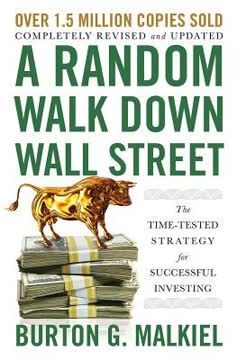つの重要なポイント
1. 恐怖を受け入れ、財政的未来をコントロールする
私はお金で投票したかったが、盲目的にはしなかった。
恐怖に立ち向かう。 多くの人々は恐怖、知識の欠如、または過去の経験から投資を避けます。しかし、財政的未来をコントロールすることは、自由と安全を達成するために重要です。まず、お金や投資に対する恐怖や先入観を認識しましょう。
自分を教育する。 投資の基本を学びましょう。重要な用語、財務諸表、市場の動向などを理解することが大切です。複雑な専門用語や概念に圧倒されないように、それらを管理可能な部分に分解しましょう。信頼できるリソース、メンター、またはコースを探して知識を深めてください。
小さく始める。 少額のお金で投資を練習しましょう。この「練習株式」アプローチにより、重大なリスクを負うことなく投資の感情的な側面を体験できます。自信と知識が増すにつれて、徐々に投資額を増やしていきましょう。
2. 複利の力を理解し、自分の「ナンバー」を計算する
インフレは年間平均3%であるため、インフレを相殺するためには年間約3%のリターンを得る必要があります。
複利が鍵。 複利の力は、時間とともにあなたの富に大きな影響を与えることができます。リターンを再投資することで、投資を指数関数的に成長させることができます。しかし、この効果を最大化するためには、早期に始め、一貫性を持つことが重要です。
自分のナンバーを計算する。 財政的自由を達成するために必要な金額、つまり「ナンバー」を決定しましょう。以下の要素を考慮に入れてください:
- 退職後の年間支出の希望額
- 退職までの年数
- 現在の貯蓄と投資額
- 投資の期待リターン率
オンライン計算機やスプレッドシートを使用して、さまざまなシナリオをモデル化し、これらの要素の変化がナンバーにどのように影響するかを理解しましょう。状況や目標が変わるたびに、定期的にナンバーを見直し、調整してください。
3. 強い使命と持続的な競争優位性を持つ企業に投資する
モートだけでは不十分です。チャーリーは持続性を見てほしいと言っています。10年未満では企業が持続的であることを証明するには不十分です。
強い使命を持つ企業を探す。 自分の価値観と一致する企業に投資しましょう。倫理的な実践、持続可能性、社会的な影響を重視する企業を探してください。このアプローチは、あなたが信じる原因を支援するだけでなく、長期的な財政的成功にもつながる可能性があります。
持続的な競争優位性を特定する。 強い「モート」を持つ企業に焦点を当てましょう。市場の地位を守る持続可能な競争優位性の種類には以下が含まれます:
- ブランド忠誠心
- ネットワーク効果
- コスト優位性
- 乗り換えコスト
- 知的財産
企業のモートを評価するために、財務諸表、市場の地位、業界の動向を分析しましょう。収益、利益、投資資本利益率(ROIC)などの主要指標の一貫した成長を長期間にわたって探してください。
4. 複数の方法を用いて評価の技術を習得する
テンキャップとペイバックタイムは、安全余裕を組み込んだ価格設定方法でした。今度は、安全余裕を組み込んだ評価方法を学びます。
複数の評価方法を利用する。 企業の公正価値を決定するために、さまざまな評価技術を使用しましょう:
- テンキャップ:オーナー収益に基づく
- ペイバックタイム:フリーキャッシュフローに基づく
- 安全余裕:将来の割引収益に基づく
各方法は企業の価値に対する異なる視点を提供し、より情報に基づいた投資判断を下すのに役立ちます。
財務諸表を理解する。 財務諸表の読み方と分析に熟達しましょう。以下を含みます:
- 損益計算書
- 貸借対照表
- キャッシュフロー計算書
収益成長、利益率、負債レベル、キャッシュフローなどの主要指標に注意を払いましょう。一貫性とポジティブな傾向を探してください。
安全余裕を適用する。 常に内在価値に対して大幅な割引で株を購入することを目指しましょう。このアプローチは、評価の誤りや予期しない市場イベントに対するバッファーを提供します。
5. 慎重な株式選択を通じてアンチフラジャイルなポートフォリオを構築する
そのたらいを用意するためには、不況が来たときに投資資金を確保しておく必要があります。
多様なウィッシュリストを作成する。 所有したい高品質な企業のリストとその公正価値を作成しましょう。この準備により、市場の機会が生じたときに迅速に行動できます。
現金準備を維持する。 ポートフォリオの一部を現金で保持し、市場の低迷や個別株価の下落時に活用できるようにしましょう。この「ドライパウダー」により、優れた企業の株を割引価格で購入することができます。
質を重視する。 ポートフォリオを10〜15の最高のアイデアに限定しましょう。この集中アプローチにより、各企業を徹底的に理解し、そのパフォーマンスを効果的に監視できます。
- 優先すべき企業:
- 強力な財務
- 優れた経営陣
- 持続的な競争優位性
- あなたの価値観と一致
6. 売買の決定において忍耐と規律を実践する
バフェットは、「企業を売る適切な時期は決してない」と言っています。
確信を持って買う。 内在価値を下回る価格で取引されている優れた企業を見つけたら、意味のある金額を投資する準備をしましょう。小さなポジションで「足を浸す」誘惑を避けましょう。これは潜在的なリターンを制限する可能性があります。
トランシェアプローチを使用する。 一度にすべてを投資するのではなく、段階的に購入することを検討してください:
- 株価が買い価格に達したときの初期ポジション
- 価格がさらに下がった場合に追加購入
- 価格が底を打ったと信じるときの最終購入
この方法は感情を管理し、さらなる価格下落の可能性を利用するのに役立ちます。
長期保有を目指す。 投資を無期限に保有することを目指し、以下の場合にのみ売却します:
- 企業の基本的なストーリーが大きく変わる
- 株価が極端に過大評価される
- はるかに優れた投資機会を見つける
保有株を定期的に見直し、投資基準を満たしているか確認しましょう。
7. 投資の旅において感謝と継続的な学習を育む
あなたがこれに勇敢に取り組んでくれて、私が助けることを許してくれて感謝しています。簡単なことではありません。
感謝の気持ちを実践する。 投資の実践において感謝の習慣を身につけましょう。成功と挑戦の両方を成長と学習の機会として認識します。この心構えは感情を管理し、長期的な視点を維持するのに役立ちます。
継続的な学習にコミットする。 投資は教育と自己改善の生涯の旅です。新しいアイデア、戦略、市場の動向に対して好奇心を持ち、オープンであり続けましょう。定期的に:
- 投資本や金融ニュースを読む
- 投資セミナーやワークショップに参加する
- 他の投資家とアイデアや経験を共有する
- 過去の決定を分析し、改善点を特定する
個人的な投資チェックリストを作成する。 潜在的な投資を評価するための基準のチェックリストを作成し、洗練させましょう。このツールは意思決定プロセスの一貫性を維持し、感情的または衝動的な選択の可能性を減らすのに役立ちます。
- 含める要素:
- 財務の健全性
- 競争力のある地位
- 経営陣の質
- 評価指標
- あなたの投資哲学との一致
最終更新日:
FAQ
What's Invested about?
- Personal Journey: Invested by Danielle Town details her transformation from a reluctant investor to a confident one, guided by her father, Phil Town.
- Value Investing: The book emphasizes value investing principles taught by Warren Buffett and Charlie Munger, focusing on evaluating companies based on intrinsic value.
- Structured Learning: It is organized around a year-long investing practice, with each month dedicated to different investing aspects like financial statements and company missions.
Why should I read Invested?
- Accessible Learning: Danielle Town breaks down complex investing concepts into relatable terms, making it less intimidating for beginners.
- Emotional Insight: The book addresses emotional barriers to investing, encouraging readers to confront fears and take control of their financial futures.
- Practical Exercises: Each chapter includes exercises and reflections to help readers apply concepts to their own lives, reinforcing learning through active participation.
What are the key takeaways of Invested?
- Investing is Personal: Align investments with personal values and missions, voting with money for companies that reflect beliefs.
- Understanding the Business: Invest only in businesses you understand, focusing on your "Circle of Competence" to mitigate risks.
- Emotional Management: Manage emotions like fear and greed, using them as indicators of market sentiment to guide investment decisions.
What is the Circle of Competence in Invested?
- Definition: It refers to industries and companies an investor understands well enough to make informed decisions.
- Personal Knowledge: Emphasizes knowing your passions and existing knowledge to make confident investment choices.
- Narrow Focus: Concentrate on a limited number of industries to deepen understanding and improve success chances.
What are the Big Four Numbers in investing according to Invested?
- Key Financial Metrics: Net Income, Book Value, Sales, and Operating Cash are crucial for assessing a company's financial health.
- Growth Rates: Look for consistent growth in these numbers, ideally at 10% or more annually, indicating a strong business.
- Predictive Value: Analyzing these numbers helps predict future performance and assess competitive advantages.
What is a Moat in investing as described in Invested?
- Definition: A Moat is a company's competitive advantage that protects it from competitors, maintaining market position and profitability.
- Types of Moats: Includes Brand, Switching, Toll Bridge, Secrets, and Price, each offering different protection levels.
- Durability: A strong Moat is intrinsic and durable, helping companies withstand market fluctuations.
How does Invested address emotional barriers to investing?
- Fear and Inertia: Danielle Town discusses overcoming initial fear of investing and using it as a guide for decisions.
- Emotional Awareness: Emphasizes recognizing emotions in the investing process to make rational choices.
- Voting with Money: Align investments with values to transform investing from anxiety to empowerment.
What is the Windage Growth Rate in Invested?
- Definition: It's the estimated growth rate a company is expected to achieve based on historical performance and market conditions.
- Importance: Crucial for determining potential future value and setting realistic return expectations.
- Conservative Approach: Encourages conservative estimates, especially for companies with inconsistent performance, to protect against overestimation.
What is the Rule #1 investing strategy in Invested?
- Buy Wonderful Companies: Focus on companies with strong fundamentals, a durable Moat, and trustworthy management.
- Margin of Safety: Buy at a price that provides a Margin of Safety, protecting against potential losses.
- Long-Term Focus: Emphasizes holding investments long-term, selling only if fundamentals change significantly.
How does Danielle Town approach emotional challenges in investing?
- Acknowledging Fear and Greed: Recognizes these emotions in the investing process to make rational decisions.
- Practice Shares: Buys small shares to experience emotional aspects without significant financial risk, building confidence.
- Inversion Technique: Challenges initial positive views by arguing against them for a balanced perspective.
What are the three pricing methods discussed in Invested?
- Ten Cap Method: Calculates price based on Owner Earnings multiplied by ten, ensuring a 10% return.
- Payback Time Method: Focuses on free cash flow to calculate investment recoup time, assessing risk and return.
- Margin of Safety Method: Estimates future price based on earnings and growth, discounting for a safe buy price.
What is the significance of dividends in investing according to Invested?
- Return of Capital: Dividends provide a steady income stream, reducing stock basis.
- Indicator of Financial Health: Consistent dividends indicate financial stability and management's commitment to shareholder value.
- Impact on Decisions: While attractive, dividends shouldn't be the sole reason for investing; prioritize effective capital allocation.
レビュー
『Invested』は賛否両論の評価を受けており、評価は1から5つ星までさまざまである。多くの読者は初心者投資家にとって役立つと感じており、その親しみやすいトーンと価値投資の概念を明確に説明している点を称賛している。個人的なストーリーテリングや父娘の関係に関する側面を評価する人もいる。しかし、批評家は経験豊富な投資家にとっては深みが欠けていると主張し、個人的な物語が多すぎることや複雑な投資戦略を過度に単純化していると指摘している。著者の信頼性に疑問を抱く読者や、本の構成が繰り返しがちであると感じる人もいる。総じて、初心者投資家にはお勧めされるが、上級知識を求める人々には満足できないかもしれない。
Similar Books














